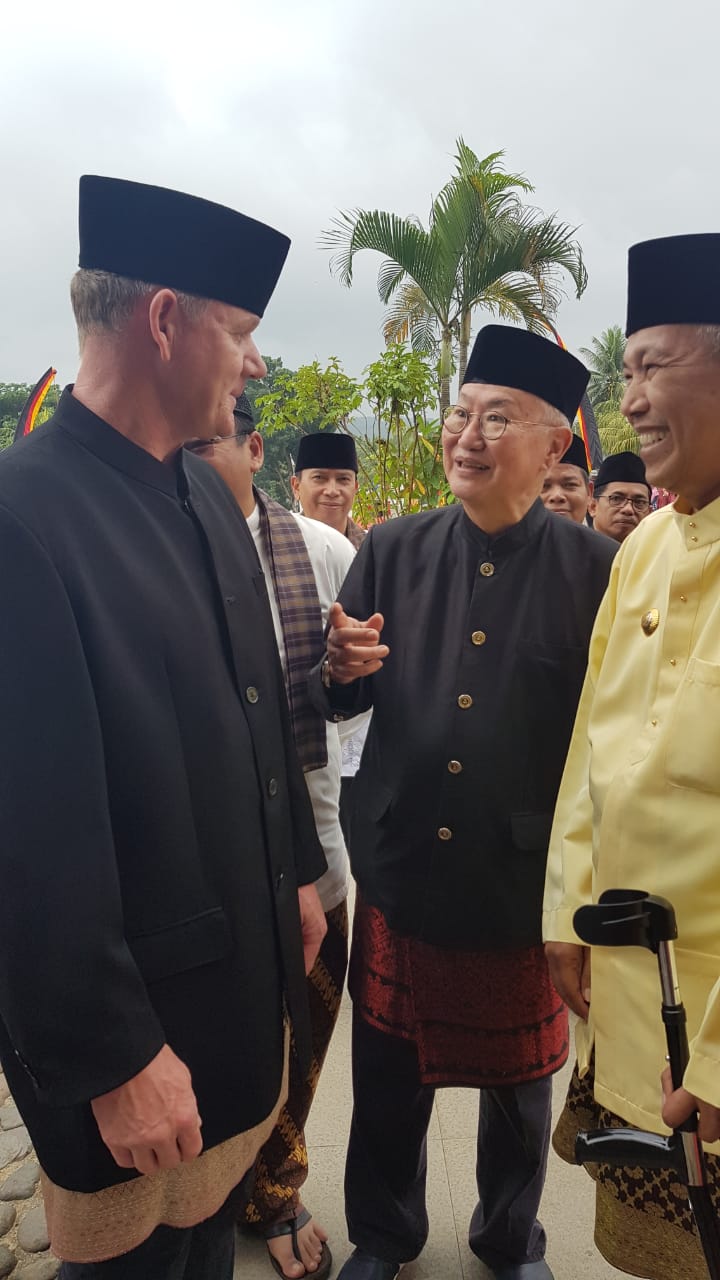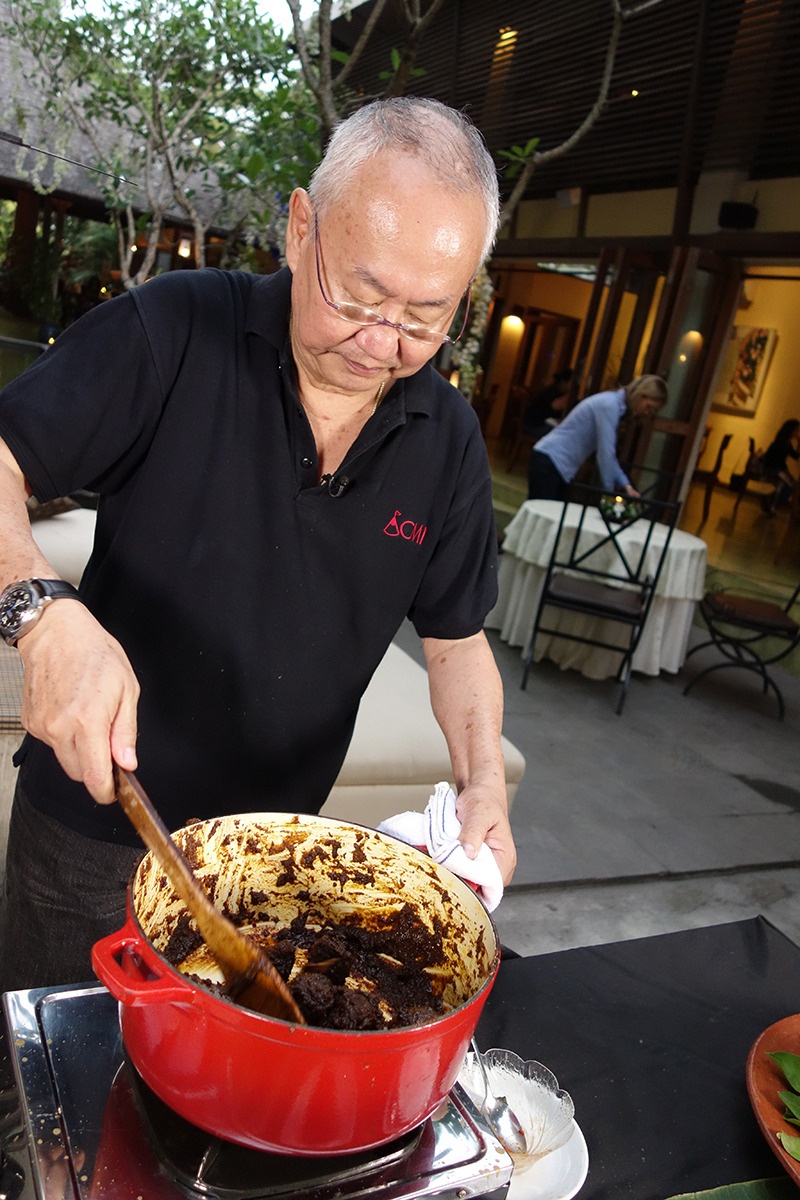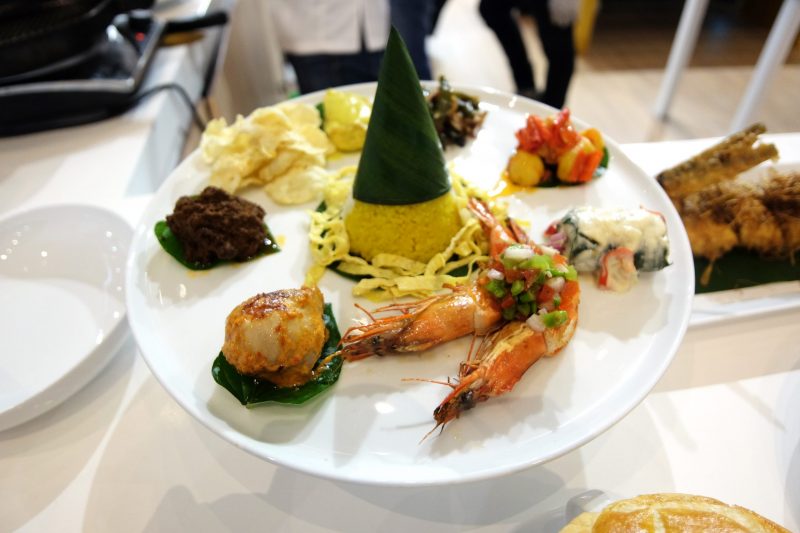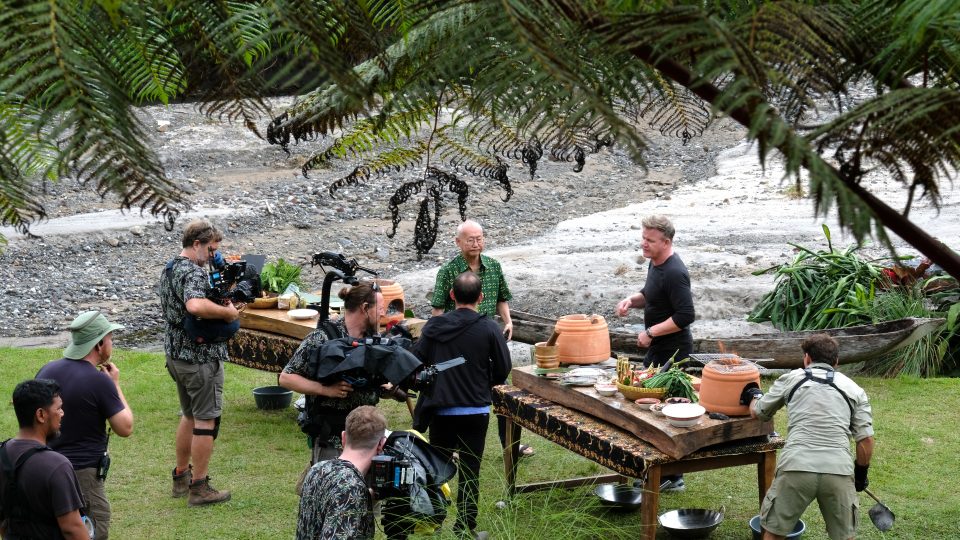Travelling to a new area means exploring; nature, the culture, and most importantly, the food. Indonesia is known to be home to 1,300 ethnic groups.
There’s Padangnese, Sundanese, Betawinese, Balinese, Javanese, and so many more. Not to mention, Indonesia is home to huge varieties of spices. Imagine all of the food inspiring the delectable delicacies Indonesia has today.
Making your own Indonesian, home-cooked meals is quite troublesome, confusing, and at times challenging. Where to start? Indonesia culinary expert and Gastronomy Consultant William Wongso can get you kicked off.
William, 73, didn’t dive into the culinary industry as others did by attending culinary school. He learned everything he knows firsthand. He used to study communications and worked in a radio station in Surabaya prior to opening his bakery in 1977. This was when the course of his life changed. He still didn’t attend culinary school but decided to learn hands-on from experts in Europe.
“I didn’t have the opportunity to go for the academic route. I opened the bakery so there was no way I would leave my business,” he pointed out.
He spent almost every year of the early 1980s travelling around Europe for four months, collecting culinary-based knowledge and essentially, tasting. William believes tasting is number one – great exposure to all kinds of meals.
“In Germany, I tasted all kinds of bread, from industrial to artisan, before I started my training so that I could know the taste factors and profiles. This helped me acknowledge different breads and their textures, flavours, aromas, and other aspects, in advance,” he explained.
It’s been at least 20 years since William dived into Indonesian cuisine after learning Western, Japanese, and a bit of Chinese and Korean cooking. While travelling around the world, it hit him: every country, every city, he’s been to tries preserving their food culture for the next generation. “It’s different in Indonesia. Everybody takes the food culture for granted – no offence,” he stated. “I’m Indonesian and I love Indonesian cuisine. I want to preserve it. I’d also like this country to preserve its heritage for the next generation.”
The new generation is noticeably having trouble learning to cook, especially Indonesian cuisine because it’s not easy to learn directly from the foods’ origins. Learning can be hefty. To William, being comfortable in the kitchen won’t be accomplished until one learns the authenticity and taste of the food right on the spot of where the food originates. “As I always say, you can Google everything but you can’t Google taste. How can you learn cooking from Google? The taste won’t come out,” he noted. Anyone keen to learn cooking should travel, spend some time, and meet the right people at the food’s origin, which is often too demanding. “A chef has to be an all-rounder; a conductor, a creator, a knowledgeable, and have great communication and management skills. It’s not a matter of just having cooking experience,” he explained.
To say Indonesian food is incorrect. According to William, Indonesian cuisine comprises regional cooking that’s very indigenous in all aspects influenced by local cultural beliefs, the economy, geographic location, and history. “I enjoy tasting regional cooking because every profile is different,” he said. Food cultures around the world are formed because of newcomers introducing their cultures. This is the same case as Indonesia due to Indian, Chinese, Arab, Portuguese, Dutch, British, and Japanese settlers over the centuries. What exactly are the secrets to Indonesian cooking? William gushed, “There are no secrets; you have to learn from the experts because it’s a matter of taste and ingredients.”
A newbie cook needs to have intention. Is it because you want to seriously learn or merely want to cook? It’s best to learn thoroughly but it depends on the location. For instance, in Java. This highly populated Indonesian island has different specialties according to the region; West, Central, DI Yogyakarta, and East. Again, William suggests that beginners learn from experts and do a lot of tasting. Googling recipes is great too, but keep in mind the practical aspect because one should understand the temperature and timing.
Travels during this eerie time are not everyone’s preference. William advised looking for the ready-made spice mixes available in grocery stores. Choose one which has the best quality. “Getting those ready-made spices actually cuts time and effort to search for spices. Imagine buying the wrong ones or creating waste because of buying too much,” he said. This reverse technique allows a beginner to test out cooking with minimal errors. After noticing that they enjoy cooking, they could start learning how to prepare dishes from scratch.
The idea of spices confuses newbies. Said William, there are dried spices like oregano and nutmeg; fresh spices like chilli, garlic, and ginger; and then aromatic spices like lemongrass and kafir lime leaves. Within the Indonesian spice base are some dried spices following regions. Aceh, Jambi, Padang, and Maluku – known as a spice island – are just some of the regions with the most complex usage of spices.
William tries to combat this confusion with his one-seasoning program, applicable for various dishes. For example, Rawon seasoning doesn’t merely have to be made into a bowl of hot, nutty meat soup. It can be added into fried rice and pepes, a cooking method using a banana leaf to wrap the food, steamed or grilled on charcoal. Now, the grill is another staple cooking tool in Indonesian cuisine. And aside from charcoal, pellet grills like Green Mountain or Rec Tec models are also great in producing that smokey taste in recipes like Ayam Bakar and Sambal chicken.
Just a few months ago. William was featured on National Geographic’s Gordon Ramsay: Uncharted as Gordon’s mentor to cook the famous and esteemed rendang Padang, or West Sumatran caramelised beef curry. “Complex yet harmonious,” is how Gordon described rendang Padang to William. It’s complex because of the 15 types of fresh, aromatic, and dried spices present. One by one, Gordon sniffed the spices, commenting how strange the scents are but that to his surprise, the remarkable number of elements and profiles can turn out to be so harmonious.
Expats in Indonesia can learn Indonesian cooking in specialised places. Those who have returned to their countries are often faced with difficulties. “I started teaching expats, both in Indonesia and abroad, under the program Indonesia Spice Up the World. Expats are introduced to ready-made spices from Indonesia and other spices to apply in their cooking,” he explained.
William teaches the basic spices which introduce three colours: red, white, and yellow spice bases. Incorporating these three colours can easily turn to an array of local delights. “We have to teach their mindset and let them understand the application of an Indonesian spice base,” he added. Always have red, white, and yellow as a spice base, plus sweet soy sauce and dried spices such as pepper, cardamom, cumin, caraway, cloves, and nutmeg in the pantry.
Thailand, for example, is progressing because it exports varieties of their spices. Everyone can use ready-made seasonings and start cooking because Thai food is commonly found anywhere in the world. Indonesian flavours? Still a question mark to most people.
New cooks could start learning kue lumpur, or mud cake because they are similar to pancakes, with which most people are familiar. Use egg white or pumpkin for the filling, then use palm sugar, coconut cream, and pandan leaves for the sauce. Kolak is another simple dessert worth trying to make. “Expats, in particular, aren’t too familiar cooking with coconut cream and palm sugar. These two desserts can help broaden their food knowledge,” he enthused. As to main dishes, William said there is plenty to start; satay, rendang, and fish to name a few.
William is used to constant travel every year. In 2019, he spent 60 percent of his time travelling, teaching, and tasting. But nowadays, he relies on online classes and webinars. “I can travel to three continents in a day now,” he joked.
A food tour specifically made for expats in Jakarta was set up because he noticed that there’s less tendency for them to let their tastebuds explore and taste different kinds of spices. Furthermore, Eat Smart Indonesia is another program he created with an old partner in Wisconsin, US that brings 12 foodies to indulge in Indonesia. “June was supposed to be the second but it’s postponed for now due to COVID-19,” he said. For US$4,900 including domestic transport, flights, food, and accommodation, these foodies will be in food heaven travelling to Jakarta, Medan, Bali, and Lombok.




